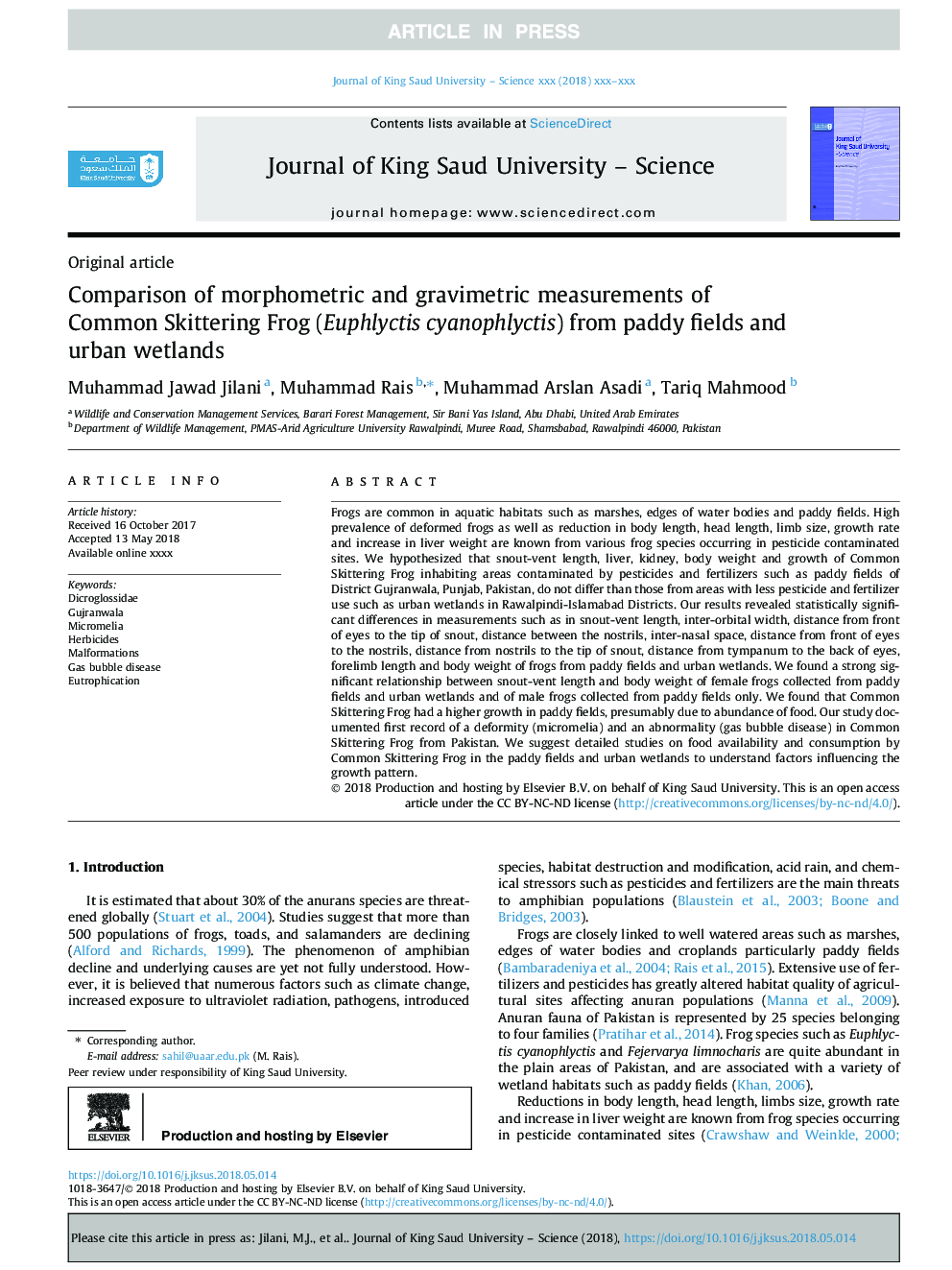| Article ID | Journal | Published Year | Pages | File Type |
|---|---|---|---|---|
| 7216586 | Journal of King Saud University - Science | 2018 | 8 Pages |
Abstract
Frogs are common in aquatic habitats such as marshes, edges of water bodies and paddy fields. High prevalence of deformed frogs as well as reduction in body length, head length, limb size, growth rate and increase in liver weight are known from various frog species occurring in pesticide contaminated sites. We hypothesized that snout-vent length, liver, kidney, body weight and growth of Common Skittering Frog inhabiting areas contaminated by pesticides and fertilizers such as paddy fields of District Gujranwala, Punjab, Pakistan, do not differ than those from areas with less pesticide and fertilizer use such as urban wetlands in Rawalpindi-Islamabad Districts. Our results revealed statistically significant differences in measurements such as in snout-vent length, inter-orbital width, distance from front of eyes to the tip of snout, distance between the nostrils, inter-nasal space, distance from front of eyes to the nostrils, distance from nostrils to the tip of snout, distance from tympanum to the back of eyes, forelimb length and body weight of frogs from paddy fields and urban wetlands. We found a strong significant relationship between snout-vent length and body weight of female frogs collected from paddy fields and urban wetlands and of male frogs collected from paddy fields only. We found that Common Skittering Frog had a higher growth in paddy fields, presumably due to abundance of food. Our study documented first record of a deformity (micromelia) and an abnormality (gas bubble disease) in Common Skittering Frog from Pakistan. We suggest detailed studies on food availability and consumption by Common Skittering Frog in the paddy fields and urban wetlands to understand factors influencing the growth pattern.
Related Topics
Physical Sciences and Engineering
Chemistry
Chemistry (General)
Authors
Muhammad Jawad Jilani, Muhammad Rais, Muhammad Arslan Asadi, Tariq Mahmood,
